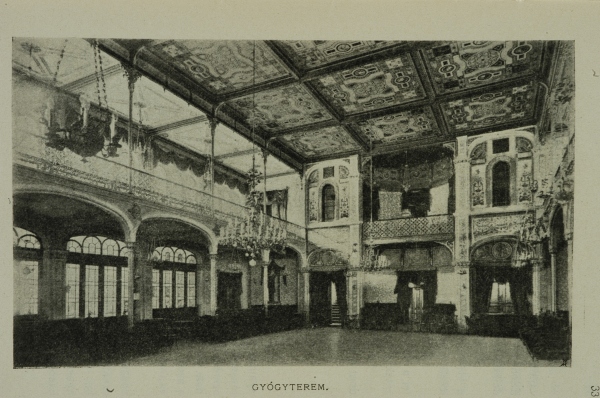The main building of the former imperial bath of the town of Herkulesfürdő (Băile Herculane, Herculesbad) just keeps decaying day by day and will eventually crumble while the mayor’s office seems to be interested only in seizing the donations gathered by the local association which aims to restore the famous bathing complex.
Herkulesfürdő is located in the valley of the Cserna (Cerna) river, and it was one of the most beautiful and famous resorts of the Austro-Hungarian empire. The baths of Herkulesfürdő, favored by Austrian empress and Hungarian queen Elisabeth, wife of emperor Franz Josef, had quite a history. Its latest golden era lasted from around the second half of the 19th century until World War I. The 20th century, mostly the long decades of communism were not grateful at all to the imposing 19th century building-complex. The state was not a good manager, failed to recognize its historical value and huge touristic potential, there was no proper maintenance, nor restoration. Finally, one might say that the beginning of the end came in February 2019, when the roof structure of the main bath collapsed, and its walls were left open .
Herkulesfürdő is abundantly rich in several thermal springs of different composition, with several medicinal properties. In ancient times, the Romans conquering these lands had observed the curative effects of these springs, and emperor Traianus was the first one to establish a bathing resort here in A.D. 105–107; he also came here to cure some of his ailments. It is also known, that the famous philosopher–emperor, Marcs Aurelius was an admirer of the healing properties of these waters. The Romans referred to the baths as “Ad aquis Herculi sacerdos” (To the holy springs of Hercules), or as “Thermae Hercului ad Mehadium” (The Mehadian thermal springs of Hercules), hence the name of the town.
After the Romans had left, migrating populations came and destroyed their constructions. In 1734 Austrian Lieutenant General, count Hamilton built a military settlement above the Roman ruins and several smaller baths on the order of Emperor Charles III. of Austria. Unfortunately, these buildings were also destroyed during the 18th century Turkish invasion.
The bathing resort was again reconstructed after the Revolution of 1848–1849 and in the 19th century it became renowned Europe-wide. Emperor Franz Iosef had visited Herkulesfürdő for the first time in 1852 and afterwards the resort started to blossom, several palaces, smaller bath pavilions, hotels and pensions were built. Queen and Empress Elisabeth had also spent the summer of 1877 here, so it was “bon ton” for aristocratic and high-ranking bourgeois ladies to also spend time in the resort. 1878 was an important year in the history of the resort, as the locality was linked to the railway network, so after the turn of the 19th century the number of visitors went over 10 000. On the occasion of the ceremonial opening of the Iron Gate straite on the Danube, emperor Franz Joseph, Romanian king Charles the I. and Serbian king Alexandor the I. had met in Herkulesfürdő and spent several vacationing days here.

A former theraphy room during the golden age
Source: mke.info.hu
The current scandal involves the mayor’s office; the authorities communicated to the Locus Association, which had worked a lot on gathering about EUR 40000 from donations to save the complex known as the “Neptun baths”, to urgently start the renovation works, in a “legal manner”.
The architects of the association claim, that the local administration just plans to get a hold of the money, and they won’t authorize the works until they manage the donations, thus dictate the terms. The Locus Association’s proposal was, that the restoration should be carried out – in a perfectly legal manner – by an authorized construction firm, and the works should be financed directly from their funds, without financially involving in any way the mayor’s office.
The authorities answered, that the only legal way of doing things would be by donating the funds gathered by the association to the town’s budget. This solution might have been appliable two years ago, when the local authorities promised to finance most of the costs of the restoration, and only a smaller part of the expenses were to be covered by the association. Locus claims, that the course of action proposed by the town hall, taking the donations, and organizing an auction for assigning the construction firm would take a very long time. Besides it might also happen, that somehow a “phantom” company will win the auction, and then the whole process would go back to ground zero.
On the other hand, the reality is that the main building of the bathing complex is in an advanced state of decay and the debate around the management of the money is really not opportune…
Title image: The baths loved by empress Sissi became a ghost resort